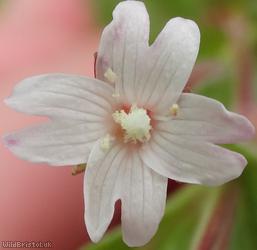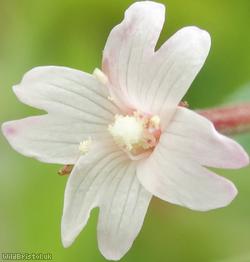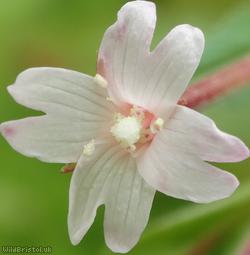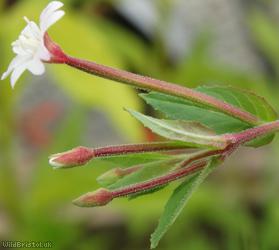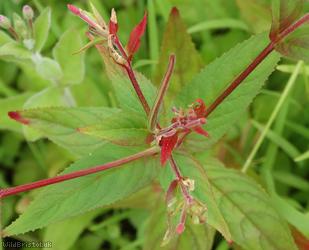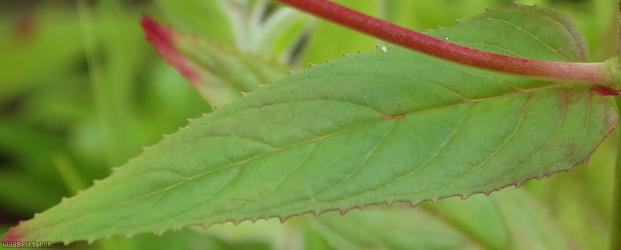Square-stalked x American Willowherb - Epilobium tetragonum x E. ciliatum = E. x mentiens
Favourite Photos
Species Description
Widespread but scatted in the South. It is under-recorded and probably occurs throughout the UK. Habitat includes: Disturbed places such as gardens, parks, allotments, churchyards, roadside verges, railway banks, pavements (at the base of walls), quarries, wasteland, hedgebanks, orchards, plantations, open woodland etc.
Stace Hybrid Flora:
Epilobium tetragonum L. x E. ciliatum Raf. = Epilobium x mentiens Smejkal (including E. x iglaviense Smejkal, which covers E. tetragonum subsp. lamyi x E. ciliatum)
The plant generally bears flowers with pink petals flushed purple, and with a clavate stigma. The stem bears the short appressed non-glandular hairs of E. tetragonum, but in the upper parts there is a scattering of spreading glandular hairs. The more developed seeds generally possess a somewhat striate surface similar to that of E. ciliatum. It is not always easy to distinguish this hybrid from E. obscurum x E. ciliatum when all three species are present. However, the E. x mentiens stem and capsule hairs may appear silkier and the capsules may be longer (although, being partly abortive, they will not normally reach the length of those of E. tetragonum) and, in well-branched plants, may appear more uprightly massed together. Also, the leaves tend to be more serrate and in late season the basal growth of E. x mentiens comprises subsessile rosettes rather than being stoloniferous.
Epilobium x mentiens was first found in the British Isles by G.M. Ash in 1936 in Surrey (Lower Birtley Farm and Farnham), where the neophyte E. ciliatum had recently been discovered to be well established. It has been recorded in cleared or replanted woodland and young plantations, orchards, quarries, sand-, gravel- and clay-pits, gardens, neglected and set-aside arable land and on waste or disturbed ground. There are also records from those areas of temperate Europe where the increasingly widespread E. ciliatum has been recognised, occurring as far north as Finland (where it is recorded as E. adenocaulon x E. lamyi).
Illustration: Geith (1924), as E. adnatum x E. graebneri.
In the wild, the hybrid is at least partly female-sterile in the British Isles. Fennoscandian material, treated as crosses with E. adenocaulon, has shown up to 5% developed seeds in the cross involving E. tetragonum subsp. lamyi and up to 10% in that involving subsp. tetragonum, and pollen up to 40% normal in both crosses; in the case of material treated as crosses between E. ciliatum and E. tetragonum (subsp. tetragonum), up to 10% seed-set has been recorded, with pollen about 40% normal (Snogerup 2010a).
Geith (1924) made this cross, separately using plants treated as E. adenocaulon and E. graebneri, both of which are synonyms for E. ciliatum. Thakur (1965) obtained F1 seed from crosses, using E. ciliatum as the female and the segregate E. lamyi as male, but did not test the viability of the seed.
